
Yes, Whole Body Vibration (WBV) enhances the body’s natural calf “muscle pump,” increases skin and limb microcirculation, and supports overall lymph movement in the lower body.
That combination can ease the feeling of leg heaviness and the appearance of swelling.
It does not treat underlying venous valve failure or replace other treatments for other medical causes of edema.
Why WBV Can Help:
Start with a quick protocol to improve circulation of blood flow without provoking rebound swelling (a condition where a temporary condition worsens after the abrupt discontinuation of a medication).
Stop if you notice pain, dizziness, heat/redness, sudden one-sided swelling, or worsening asymmetry, and seek medical advice.
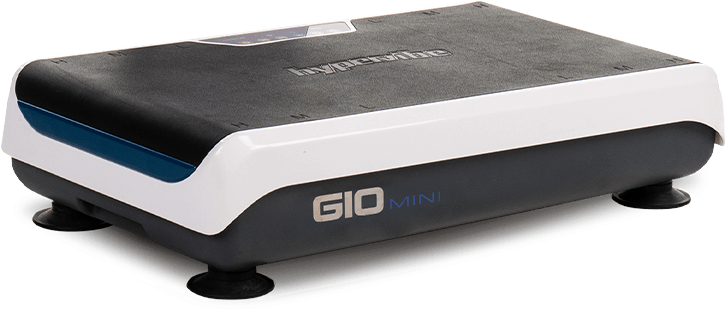




There are many different kinds of swelling that can occur in the body:
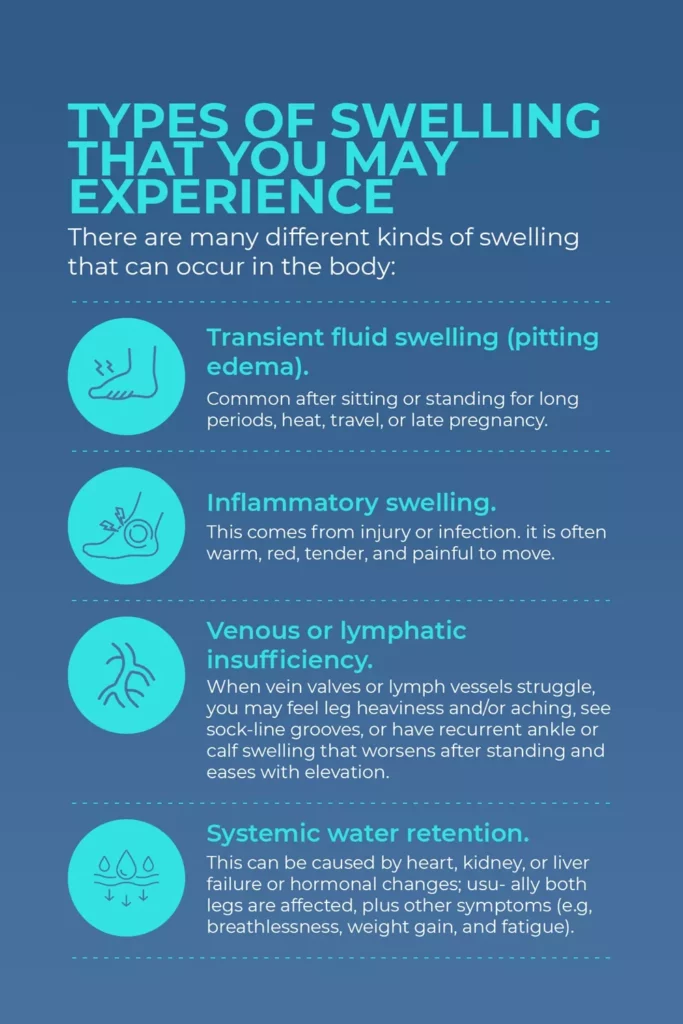
Not all swelling is the same—different edema types have different causes and treatment strategies.
Whole Body Vibration (WBV) causes rapid, automatic contractions in the leg muscles.
These contractions accelerate activity of the body’s natural muscle pump system, the veins and lymphatics, helping move fluid upward toward the heart and lymph nodes, similar to walking.
That’s why many people step off a Vibration Plate with legs that feel warmer and less tight.
In lipedema care, adding low-setting vibration therapy to standard manual lymphatic drainage (MLD) has improved outcomes versus MLD alone, reinforcing the idea that vibration can augment fluid-clearance strategies.
WBV works by simulating higher gravitational forces on the body.
Because your venous and lymphatic systems must constantly work against gravity, this targeted loading can help train and support those return pathways, aiding the work of your vessels and valves.
Vibration can acutely raise skin and peripheral blood flow, likely via shear-stress–driven vasodilation (e.g., nitric oxide mechanisms), improving local perfusion.
Here is more evidence of the efficacy of WBV for swelling.
If you’re exploring vibration training for leg swelling, look for devices/settings that allow low settings, start with short bouts, and pair sessions with light walking and elevation afterward for the best effect.
Start with this protocol for all forms of swelling:
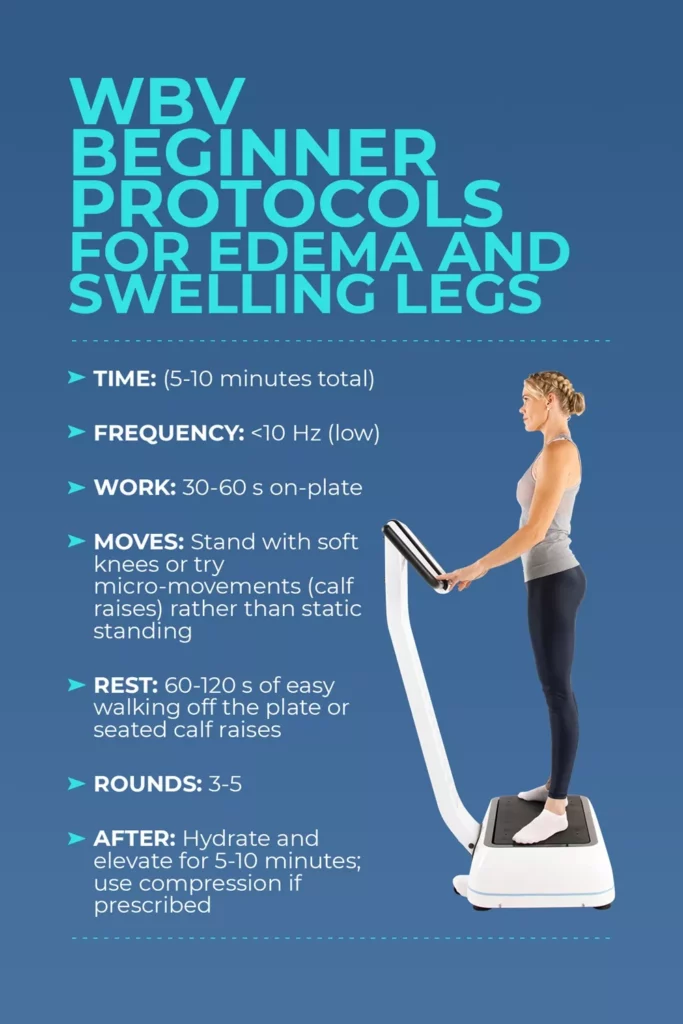
Suggested beginner protocol for using whole body vibration to support leg edema and swelling.
Start-here routine (5–10 minutes total)
Progression plan
Common mistakes to avoid
What to track
When to stop or modify
Foot-specific cautions
When to see a doctor






Compression socks provide graduated pressure to help reduce leg swelling and support venous return.
Whole Body Vibration (WBV) can make legs feel lighter by enhancing the muscle pump system and improving microcirculation.
That can ease heaviness, mild swelling, and “sock-line” marks after long sitting.
It does not repair damaged vein valves or replace medical care, compression, or walking programs.
Beginner settings
Pairing with compression
Whole-body vibration (WBV) can provide symptom relief, but it does not replace first-line care such as compression and manual lymphatic drainage (MLD).
Lipedema tissue is pain-sensitive and bruise-prone, so keep settings low.
After vein ablation, orthopedic surgery, or an acute soft-tissue injury, wait until tenderness subsides and your physician or therapist clears you to use a vibration plate.
Many clinicians use a ~2–4 week window post-procedure before trialing low-frequency WBV, but your surgeon’s protocol overrides any generic timeline.
Follow the clinician’s protocol.
If you don’t have one, consider the below program to start.
Week-by-week progression (low and slow)
Always coordinate with your walking program and any prescribed compression (before or after sessions, as your clinician prefers).
How to monitor progress
Keep a brief daily log of pain (0–10), local warmth/redness, and circumference at consistent landmarks or times of day.
Stop and notify your clinician if swelling worsens, warmth/redness spreads, or you notice unusual bruising.
If swelling is driven by heart failure, kidney or liver disease, endocrine disorders, or medications (e.g., certain calcium-channel blockers), a vibration plate may help with symptom management. See your clinician first and follow the medical plan.
If your doctor okays vibration therapy:
Whole Body Vibration (WBV) works best as an adjunct to proven edema care.
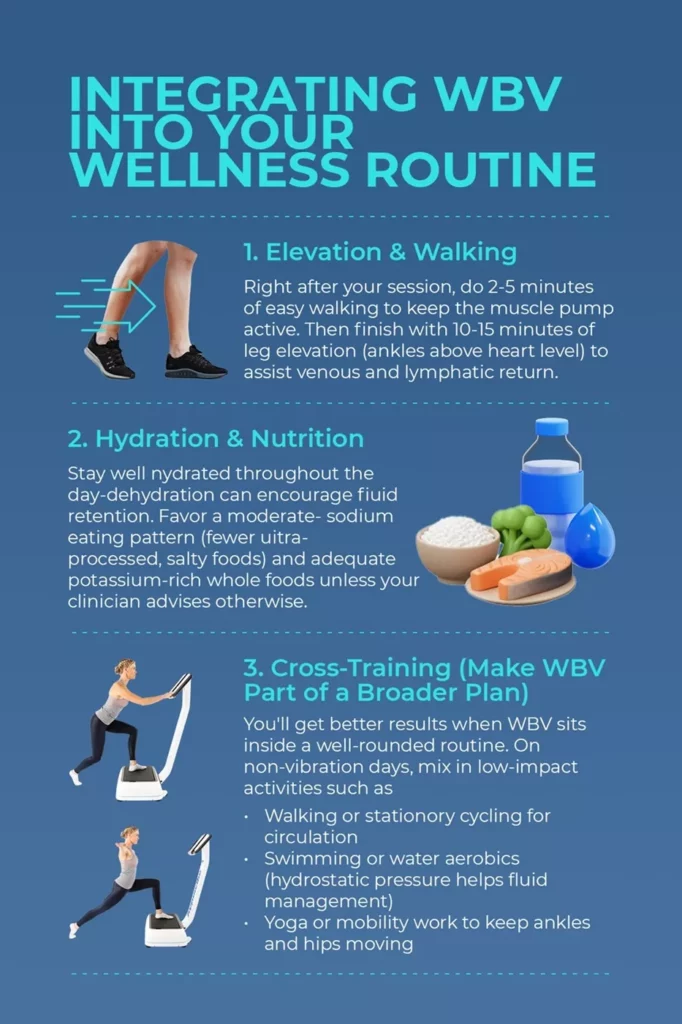
Combine whole body vibration with walking, hydration, and cross-training for better swelling and circulation support.
If you wear compression garments, time WBV in one of two ways (ask your clinician which they prefer for you):
Keep frequency under 20 Hz, use 30–60 s bouts with walking or ankle pumps between sets, and stop if heaviness, warmth, or redness worsens.
Right after your session, do 2–5 minutes of easy walking to keep the muscle pump active.
Then finish with 10–15 minutes of leg elevation (ankles above heart level) to assist venous and lymphatic return.
If you’re desk-bound, sprinkle in brief walking breaks during the day as well.
Stay well hydrated throughout the day—dehydration can encourage fluid retention.
Favor a moderate-sodium eating pattern (fewer ultra-processed, salty foods) and adequate potassium-rich whole foods unless your clinician advises otherwise.
There’s no “magic drink” that eliminates swelling.
Avoid diuretic teas/supplements or “detox” products unless your medical team approves them, especially if you take heart, kidney, or blood-pressure medications.
You’ll get better results when WBV sits inside a well-rounded routine.
On non-vibration days, mix in low-impact activities such as:
This integrated approach supports microcirculation and symptom control more reliably than any single tool on its own.
Vibration Therapy is safe for everyone unless contraindicated.
Here are some contraindicated conditions that require medical consultation before attempting Vibration Therapy:
If any of these apply, check in with your doctor before using the machine.
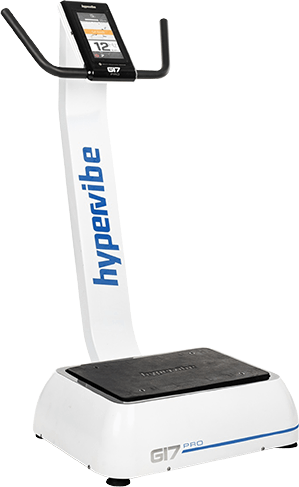




Choosing a Whole Body Vibration (WBV) machine—also called a vibration plate—doesn’t have to be confusing.
Focus on five essentials that actually affect comfort, safety, and results:
Specs and marketing claims can blur together—especially with terms like “frequency” and “amplitude” thrown around.
The table below distills what matters so you can compare models quickly and choose a plate that fits your body, goals, and home setup.
|
Model |
Price |
Motion Type |
Frequency Range |
Max G‑Force |
Platform Size |
Warranty |
|
Hypervibe – G14 |
$3,129 |
Pivotal |
5–30 Hz |
14 g |
25.8” x 15.5” |
2/5/10 years |
|
PowerPlate – MOVE |
$2,896 |
Triplanar |
30-40 Hz |
6 g |
30” x 24” |
1 year |
|
Globus Physioplate – My Gold |
$8,125 |
Linear |
15-60 Hz |
18 g |
36.6” x 23.6” |
2 years |
Galileo® S 35 |
On request |
Pivotal |
5.33 Hz |
20.6 g |
27 x 19 |
2/10 years |
|
VibePlate – 2440 |
$2,595 |
Linear |
10-60 Hz |
Not advertised |
24” x 40” |
5 years |
Yes, vibration therapy can reduce leg edema.
Short, low-frequency Whole Body Vibration (WBV) can boost microcirculation and activate the calf “muscle pump,” which may ease fluid-related ankle/leg puffiness. Pair brief bouts with walking, elevation, and (if prescribed) compression.
Avoid use and seek care if swelling is new, one-sided, painful, or hot/red, or if you’re short of breath.
It can help mild swelling that’s worse after sitting or standing.
Expect your legs to feel lighter—not disease reversal.
You don’t “slim down” lymphedema with a gadget.
Evidence-based care includes compression therapy, manual lymphatic drainage (MLD), exercise/walking, skin care, and weight management if advised.
WBV may be used for symptom management (conservative, clinician-guided dosing).
Lipedema is a chronic, painful, bruise-prone fat-tissue disorder, typically symmetrical in the legs (often sparing the feet), with tender nodular fat and easy bruising.
Swelling can fluctuate with heat or hormones.
Lymphedema, on the other hand, is a protein-rich fluid accumulation due to lymphatic transport failure (e.g., after cancer treatment or infection).
Often asymmetric, it may include pitting early and skin changes later (fibrosis, thickening).
The two can coexist.
Diagnosis and management differ; see a clinician trained in lymphatic disorders.
It can feel temporarily relieving (venous return improves with elevation), but it doesn’t treat the underlying adipose-tissue pathology.
Combine elevation with hydration, compression (if prescribed), and low-intensity movement (ankle pumps, short walks).
Avoid painful or high-impact work.
There’s no instant fix, but you can reduce discomfort:
If swelling is sudden, one-sided, painful, red/hot, or you’re short of breath, get urgent care.
In the general population, the most common benign causes are dependent (gravity-related) fluid pooling after long sitting/standing, heat, and high-sodium meals.
Frequent or severe swelling can reflect venous insufficiency or varicose veins, injury/inflammation, lymphedema, medications (e.g., certain blood-pressure or diabetes drugs), and systemic conditions (heart/kidney/liver).
Asymmetry, pain/heat/redness, or shortness of breath are red flags.
See a clinician for persistent or unexplained edema.
No drink “flushes” swelling.
Adequate water intake helps maintain fluid balance; some people benefit from limiting sugary and high-sodium beverages.
Avoid “detox/diuretic” teas or supplements unless your clinician approves—these can interact with medications or underlying conditions.
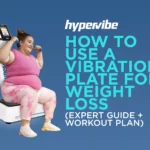
Here’s how we use a vibration plate for weight loss...
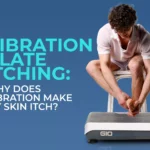
Many people, especially beginners, notice an itchy or tingling “pins-and-needles”...

Taking into consideration the growing popularity of the vibration plate,...

The lymphatic system, also called the lymphoid system, is an...
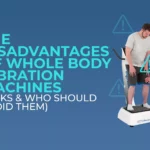
Are vibration machines bad for you? Yes, if used incorrectly....